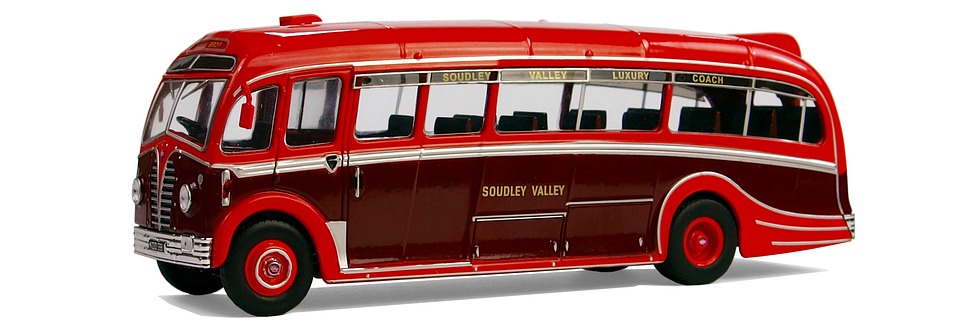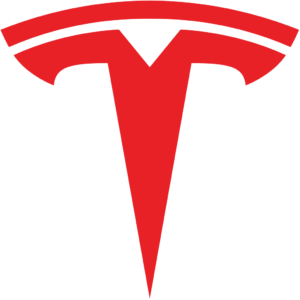Cities banning diesel busses and taxis, electrics are the future ….. Proterra Electric Busses
Around the globe there is an increasing movement to clean up our polluted environment, particularly in the world’s largest cities. If anything, the COVID-19 pandemic has accelerated this movement as the marked decrease in vehicle traffic it created gave people a glimpse of how much ICE-powered cars, trucks, and busses contribute to this pollution. That pollution – in particular, that caused by diesel exhaust gases — in turn creates a marked increase in health problems, especially for people who cannot escape it because of where they live or work.
99% of New York’s cabs were electric in 1899. There were three popular electric cars in the early 1900s—the Columbia Runabout, the 1914 Detroit Electric Car, and the American Morrison Electric with ranges of up to 40, 80, and to 180 miles respectively. Oh, we yearn for the good old days! Today NYC’s traditional ICE-powered taxi fleet has been decimated by Uber and Lyft – currently also mostly ICE-powered. However, fleet operators in particular are increasingly attracted to EVs since their operating and maintenance costs are some 25% to 30% that of ICE-powered vehicles. Interestingly NYC’s Taxi and Limousine Commission approved Tesla’s Model 3 for taxi use in November of 2019. Madison, Wisconsin has a fleet of 40 Tesla Model 3s in daily use as taxis.
London has for years sponsored incentives to switch that city’s black cabs to electric power from diesel power. After 2018, all new taxis are to be capable of zero emissions. With the allowed life of cabs, the entire fleet of 20,000 black cabs should be zero emission by 2032, if not earlier. The London Electric Vehicle Company’s (LEVC) cabs are technically hybrids with an electric range of about 70 miles. The other London cab is Nissan’s all-electric Dynamo.
In Seoul, Korea, government officials have banned the use of diesel-powered vehicles in public sector fleets by 2025. Diesels currently comprise roughly 65% of vehicles used by the city government, and about 1% of the city’s public transportation system. The new law also states that all busses ordered after January 1, 2021 must be electrically powered.
Many other cities around the globe, inspired by relatively empty streets as a result of the COVID-19 pandemic, are closing off key segments of city streets to all vehicular traffic with the exception of commercial goods delivery vehicles. For all its faults and problems, BMW has come up with an interesting option for its hybrid vehicles. Using geofencing, when a hybrid BMW so-equipped enters a city it automatically switches from gas or diesel power to battery power. This feature is particularly useful in Europe where so many hybrid electric vehicles are sold relative to EV sales in the US.
Regarding busses, in general, there are two key bus fleets to consider – school busses and city transit busses.
In the US, there were some 476,000 school busses in use in 2017-2018, with a total annual 3.45 billion miles of use, each bus averaging only 7,240 miles of use annually. Dividing this mileage figure by 180 school days in a school year, the average bus only gets driven 40 miles a day! The great majority of these busses are diesel powered or gasoline powered. There were 13,398 school districts in the US in 2018 so the average school district in the US has about 35 school busses. These vehicles represent a huge opportunity for electrification and would drastically lower school systems’ bus operating and maintenance budgets.
The largest size school busses when filled with passengers weigh less than 36,200 pounds, many 10-25% under that. Typically, such busses make two runs a day, so the busses could be plugged in to chargers between trips if the bus yard had solar power and storage batteries, reducing the need for battery pack size. Proterra (more later) and Daimler (owner of Thomas School Busses) recently announced a partnership to produce battery powered school busses. Their first such effort, open for orders in 2020 and delivery in early 2022, is called the Saf-T-Liner C2 Jouley – with a 200 kWh battery and 134 miles of range.
The state-of-the-art Jouley comes with vehicle-to-grid (VTG) capability. There is huge potential to use a parked school bus fleet in a vehicle-to-grid (VTG) application while the busses are parked overnight, on weekends, and during the summer. An average school district school bus fleet might have 35 times an average of 250 kWh batteries in each bus equals 8,750 kWh or 8.75 MWh of energy capacity. That’s the equivalent of 117 Tesla Model 3s or Ys battery power! More on VTG in another blog soon.
With regard to large urban transit busses, whether single unit or articulated, there are some 2.5 million such busses in the world, about 77% of those found in China, India, South America, Europe, and Russia. The US had a total of about 71,743 such busses in 2018. The bulk of these busses are diesel powered. China now has a total of about 420,000 electric busses – about 98% of the world’s total electric busses. Their dominant supplier is BYD. Electric bus sales are increasingly dramatically around the globe. However, unlike automobiles, converting bus fleets – whether school busses, or worse, transit busses – is a far more challenging problem as compared to charging one or two individual electric cars at home or on the road.
There are two ways to charge transit busses. The first is enroute at selected stops, through wireless chargers either buried in the pavement or by overhead wireless charging pads. At some (or all) bus stops, the bus parks over or under the wireless charging pad and accepts a “mini” charge to keep the vehicle’s battery topped up throughout its route. The second way of charging is by the more traditional nightly method of using charging stations and power cables installed throughout the transit bus yard.
It’s easy to make the case for battery powered busses on an individual bus-by-bus basis. However, the problem becomes much more costly and complex when considering a bus fleet. Most electric transit busses available today have batteries that range from 240 kWh to 350 kWh per bus. MAN’s new Lion’s City Electric busses have either 480 kWh or 640 kWh batteries! As an article in WIRED magazine points out: “If you want to buy an electric bus, you have to buy into an entire electric bus system.” This is while you maintain a gasoline or diesel refueling/maintenance yard for the diminishing ICE-powered part of the bus fleet.
Imagine you have a fleet of 200 busses each requiring a charge of 250 kWh a day – that’s 50 megawatt hours of charging a night! The average US home consumes about 12 megawatt hours a year or about 0.033 megawatt hours a night. So only charging busses at this sized bus charging station is equivalent to 1,515 average US homes’ energy use.
To design and build a new electric bus charging yard, there is the cost of additional land to be purchased, charging stations to be purchased and installed, and the cost of having the electric utility run sufficient power (new substations and grid wiring) to charge the entire (or most of the) fleet at any one time, overnight if possible when power is less expensive.
A recent article in CleanTechnica highlighted both the challenge and the opportunity in operating an effective and efficient fleet charging yard. I will quote two relevant paragraphs from it. This is Pat Romano, President and CEO of ChargePoint speaking:
“…..if the electricity is managed properly. That can easily get out of hand if fleet managers simply install a bank of …. unconnected, unintelligent chargers that pull power from the grid and pump it into vehicles with no regard for the instantaneous cost of electricity, the state of charge of the vehicle, the number of miles it will drive the following day, or how long it has to charge….You can’t manage the energy, you can’t manage access control.
A fully integrated energy management solution ….. gives you a route planning feed the minute they know the next day’s routes ….. you know the temperature, weather ….. vehicle type, historical electron mileage for the vehicle ….. energy cost curves [that vary with time of day and weekend] …. VINS of all vehicles and how much energy they need, so when they come in I need to read the state of charge of the vehicle …..and run an optimization program [to manage all resources across all busses most effectively].”
There is no doubt electric busses are coming fast, aided by strong national and local legislative pull. Some examples: The Netherlands has passed a law that all public transit vehicles will be emission free by 2025. Hamburg Germany new law says that all busses purchased from 2020 on will be emission free. By 2037 (or much sooner I predict) all of London’s 8,000 busses will be emission free. Naturally, the US is far behind in this movement hindered by a lack of sufficient encouragement and incentives by the US government, though this may change soon.
There are so many key brands globally in the transit bus market it is difficult to find reliable statistics and keep up with the rapid market changes. In China ANKAI, BYD Company, Higer Bus, Yinlong Energy, YUTONG, and Zhong Tong are dominant electric bus players. In Europe, Volvo, Daimler, and VDL Groep (Netherlands) and Solaris (Poland) are prevalent.
US producers are somewhat under-represented in this bus market. Van Hool, a Belgian company, markets four product lines in the US through its exclusive dealer ABC Companies. New Flyer, a Canadian company, manufactures the all-electric Xcelsior CHARGE bus, available with 311 to 366 kWh batteries and capable of 55 to 225 miles of range. They have four manufacturing plants in the US and a plant in Winnipeg, Canada. IMO, there is one electric bus manufacturer here in the US that should be on any reader’s radar – Proterra.
Proterra, who TechCrunch called “the Tesla of electric busses”, was founded in 2004 by Dale Hill, a mechanical engineer. It has grown significantly and has now sold over 1,000 electric busses to various cities in the US and Canada. Headquartered in Burlingame, CA Proterra has plants in City of Industry, CA and Greenville, SC. While its Catalyst 35 and 40 busses can operate about 240 and 329 miles respectively miles on a single charge, its Catalyst E2 max set a single charge mileage range of 1,101.2 miles on September 4th, 2017. Proterra offers a turnkey charging system for bus fleets.
Proterra offers a battery leasing program to help lower the initial capital investment for customers converting to their electric busses. Its bus bodies are crafted from carbon fiber reinforced composite material. The company also offers an optional deal where it owns the charging facilities it constructs for a customer, again in order to reduce the initial costs of the customer switching from ICE powered to battery powered busses. Over the years it has developed an integrated bus fleet management system and capability. It is also working with both Daimler/Freightliner (Thomas School Busses/Jouley), and Van Hool (CX45), the Belgian bus company with a plant in Morristown, TN.
Proterra’s CEO is Jack Allen, an ex-Navistar executive. The company has a number of top-tier investors such as Mitsui, BMW i Ventures, Kleiner Perkins Caufield & Byers, and more.
Proterra, having completed eight rounds of private financing, has recently engaged Chase and Co., Morgan Stanley, and Deutsche Bank AG to advise it on going public. It is likely to do this under a special purpose acquisition company (SPAC) arrangement as was used by Nikola when it recently went public. I am not a financial advisor, but when Proterra becomes publicly traded, I will buy a few shares at the first opportunity.
The growth of electric busses and taxis is also consistent with the growth of battery powered delivery vans. Indeed, no vehicle fleet operator today – already under intense cost pressure — can pass up the operating and maintenance cost savings associate with electric rather than ICE-powered vehicles. In addition, the battery powered vehicles are non-polluting, ensuring compliance with increasingly strict federal and local emission and environmental regulations. As an added bonus, these electrically powered vehicles are less noisy, vibrate less, and are thus more pleasing to customers and drivers alike.
In an earlier article I cited the benefits of the University of Georgia adopting Proterra busses for its intra-campus bus fleet. I repeat those words here. The University of Georgia has found that by switching its campus bus fleet from diesel to electric Proterra busses, it has reduced daily operational costs per bus by $95 a day! With a goal of 33 busses by 2021, that will be over $1 Million per year saved. What organization can ignore those savings? On top of that, net greenhouse gas emissions are reduced by 70% by dumping the diesels. America, are you listening?
These benefits cannot be ignored by any responsible business manager or budget-conscious politician. Electrically powered busses, taxis, and delivery vans will lead the electric vehicle revolution. Hang on……….
Image courtesy of Pixabay
Your feedback in the form of comments or suggestions are welcome in the comment window. Thank you for following my blogs on this site and for participating in my blogging community.




